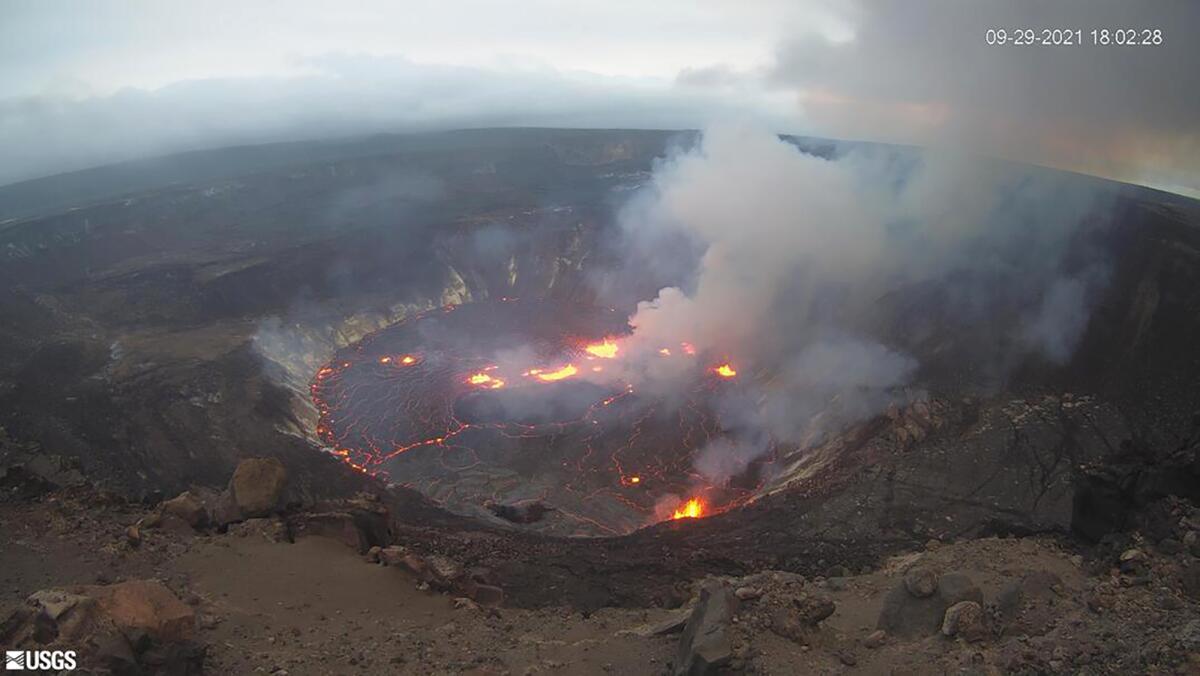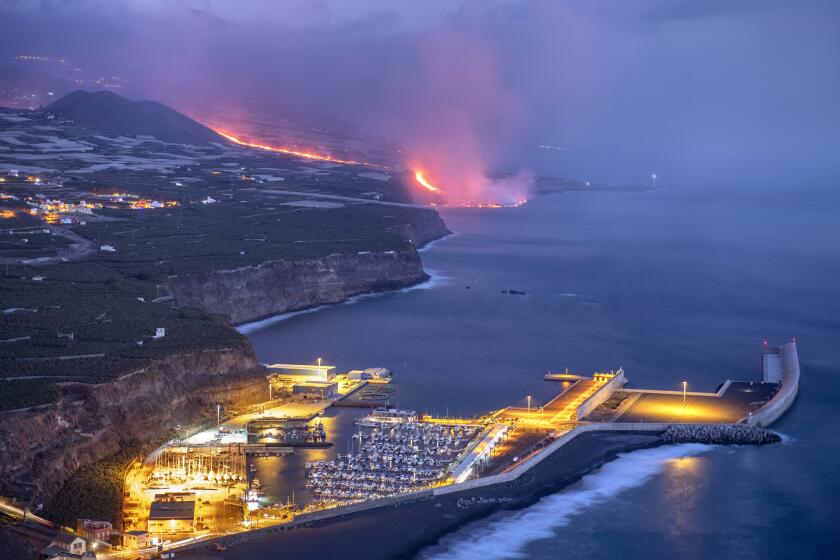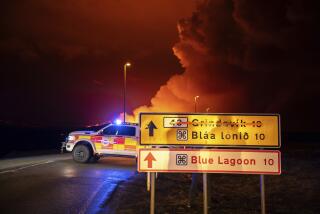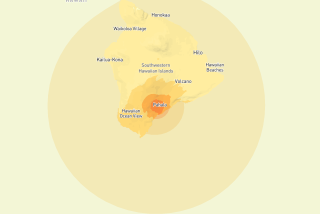Hawaii’s Kilauea erupts, creating lava fountains and shooting up clouds of gas

- Share via
HONOLULU — One of the most active volcanos on Earth is erupting on Hawaii’s Big Island.
Officials with the U.S. Geological Survey confirmed Wednesday that an eruption has begun in Kilauea’s Halemaumau crater at the volcano’s summit.
Webcam footage of the crater showed lava fountains covering the floor of the crater and billowing clouds of volcanic gas rising into the air. The same area has been home to a large lava lake at various times throughout the volcano’s eruptive past.
The eruption is not in an area with homes and is entirely contained within Hawaii Volcanoes National Park.
“All signs indicate that it will stay within the crater,” said Ken Hon, the USGS scientist in charge of the Hawaii Volcano Observatory. “We’re not seeing any indications that lava is moving into the lower part of the east rift zone where people live. Currently all the activity is within the park.”
The volcano’s alert level has been raised to “warning” and the aviation code changed to red.
Scientists say the surface of Spain’s La Palma island is continuing to expand as lava from a volcano flows into the Atlantic Ocean and hardens.
Earlier Wednesday, officials said increased earthquake activity and ground swelling had been detected, and at that time they raised the alert levels accordingly.
Kilauea had a major eruption in 2018 that destroyed more than 700 homes and displaced thousands of residents. Before that eruption, the volcano had been slowly erupting for decades, but mostly not in densely populated areas.
Before 2018, Kilauea had been erupting since 1983 and streams of lava occasionally covered rural farms and homes. During that time, the lava sometimes reached the ocean, causing dramatic interactions with the water.
Over four months in 2018, Kilauea spewed enough lava to fill 320,000 Olympic-size swimming pools, burying an area more than half the size of Manhattan in up to 80 feet of now-hardened lava. The molten rock reduced landmarks, streets and neighborhoods to a vast field of blackened boulders and volcanic shard.
Toward a more sustainable California
Get Boiling Point, our newsletter exploring climate change, energy and the environment, and become part of the conversation — and the solution.
You may occasionally receive promotional content from the Los Angeles Times.
After the 2018 eruption, the summit lava lake stopped erupting and for the first time in recorded history began to fill with water, raising concerns about the possibility of an explosive interaction between lava and groundwater.
The same area of the volcano that began erupting Wednesday also erupted in December, which lasted until May.
Hon said these types of eruptions could be happening for years as the volcano fills up.
More to Read
Sign up for Essential California
The most important California stories and recommendations in your inbox every morning.
You may occasionally receive promotional content from the Los Angeles Times.











